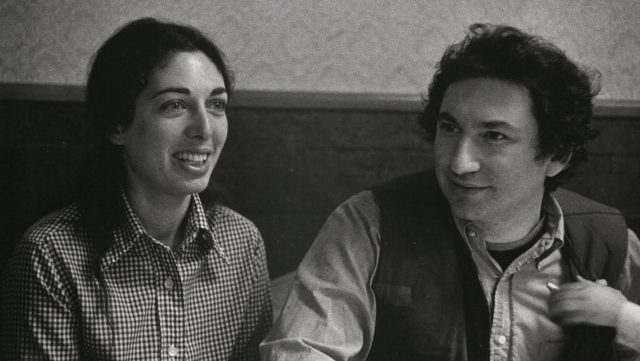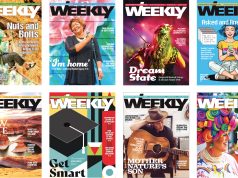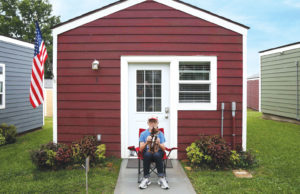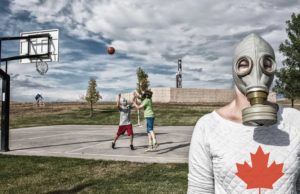
Ken Jacobs is coming back to Boulder, and it’s kind of a big deal.
“He’s part of the history of poetic cinema/experimental cinema, the pivotal group of New York City artists,” Hanna Rose Shell says. A filmmaker in her own right, Shell is an associate professor straddling two departments at the University of Colorado: art and art history, and cinema studies and moving image arts. She’s also the current director of The Brakhage Center for Media Arts, which is dedicated to preserving the legacy of former CU professor and poetic filmmaker Stan Brakhage.
Shell aims to honor and engage with the legacy of Brakhage while also creating a space for “diverse artists and art makers” who are “interested in interrogating and digging a little deeper into the Stan Brakhage archive — looking at it in unusual ways.”
And that sentiment dovetails nicely into this semester’s Brakhage Symposium: Living Archive, Living Cinema: Processing the Work of Ken and Flo Jacobs.
Free and open to the public Oct. 5 and 6, Living Archive, Living Cinema is a collaboration between the Brakhage Center and CU’s Rare and Distinctive Collections (RaD). It features the newly acquired Jacobs’ collection to explore the influential work of Ken and Flo Jacobs while questioning what it means when an institution like CU accessions a filmmaker’s archive.
“It’s been very pointedly called the Ken and Flo Jacobs Collection,” Shell explains, adding that this collection will center the role Flo Jacobs played in Ken’s career. “[Living Archive, Living Cinema] is not just about Ken Jacobs — or rather, just a retrospective of Ken Jacobs. It’s Ken Jacobs in the context of his archive and drawing out all these other voices [like wife Flo and son Azazel] … to open [a] conversation about who is part of the process of making experimental film.”
Azazel Jacobs will be attending Living Archive, Living Cinema. He’ll be there specifically to introduce and discuss the movie he made, 2008’s Momma’s Man, “to get at this interesting issue, which is the relationship of Ken Jacobs’ work and the archive material and the space where he worked,” Shell says. “As well as the family relationships that create and facilitate the formation of archival collections.”
Past, present and future
In charge of that archival collection is Jamie Marie Wagner, who oversees moving image film and video materials in RaD, as well as paper collections related to American experimental filmmaking and media history. For several years now, Wagner has been working with the Jacobs, particularly Azazel, to collect and ship the family archive from their New York loft to CU’s library.
As Wagner explains, the sheer number of items in the archive is extensive: 87 linear feet of banker boxes containing printed material and VHS tapes. A lifetime of work that Wagner gets to choose from to display during the symposium.
“I don’t know how much of our audience is familiar with Ken and Flo Jacobs,” Wagner says. “Even in cinema studies, there are new students who might not know the times Ken and Flo have been here before.”
So Wagner will provide a panel display at the reception’s opening, “a timeline of major works, introducing who they are,” in addition to “a few cases of artifact documents from the collection.”
And from the Jacobs’ collection of VHS tapes, Wagner plans to present clips, including the original footage that went into the Jacobs’ finished works — a great deal of their filmography deals with deconstructing and reworking found footage — as well as home movie conversations and rehearsals for shadow plays.
That includes a series of 3D stereoscopic slides from the Brakhage Collection: “pictures Ken Jacobs took in the 1970s while he was visiting the Brakhage family,” Wagner explains. “Pictures of Jane Brakhage and Flo Jacobs with all of the kids walking around Central City, playing with goats.”
For these slides, Wagner two took 35 mm stills, printed the images on larger card stock and pulled stereoscopic viewers out of the rare books collection “so people can view these photos that Ken took of Stan’s family on these stereoscopic slides” in all their 3D glory.
Featuring two days of seminars, screenings and presentations, Shell sees Living Archive, Living Cinema as proof that “CU Boulder continues to center its legacy as a centerpiece of the past, present and future of experimental filmmaking.”
ON SCREEN: CU Boulder’s Brakhage Center Symposium: Living Archive, Living Cinema. 11 a.m.-9 p.m. Thursday, Oct 5. and 9:30 a.m.-9 p.m. Friday, Oct. 6., ATLAS and Norlin Library. Free














